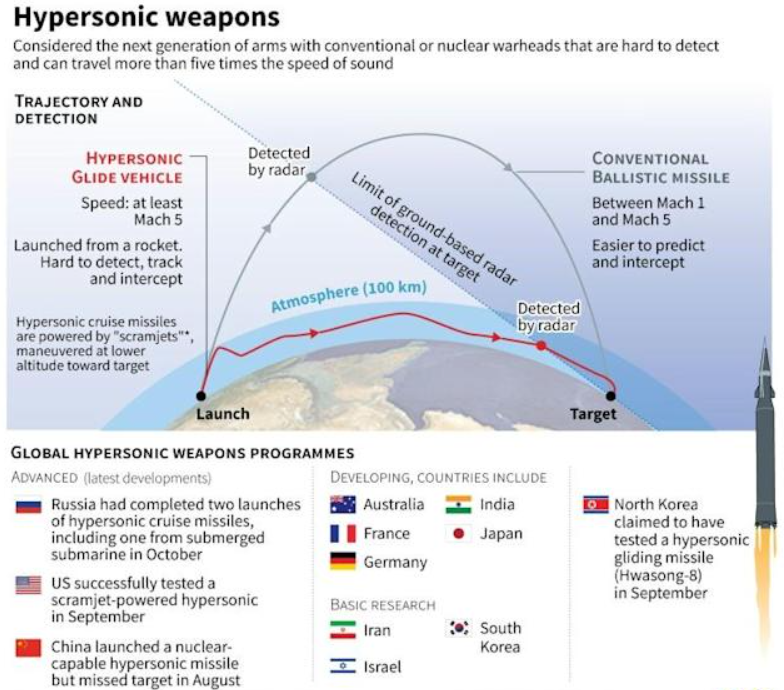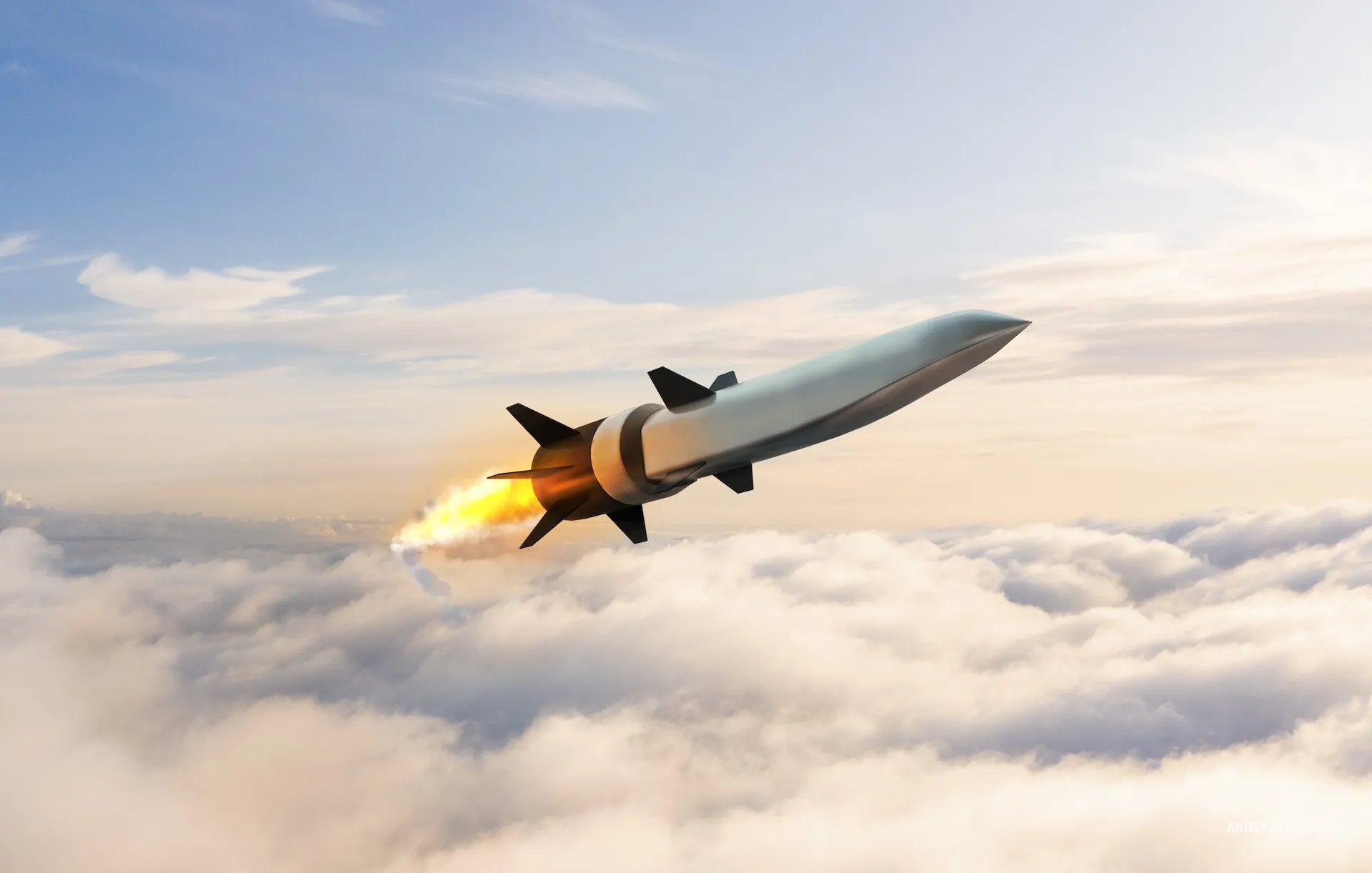Table Of Content

The strong g-forces produced by rocket engines placed extreme demands on human physiology, so piloted rocket-propelled aircraft never became more than experiments. But rocket technology enabled the U.S. and the Soviet Union to build arsenals of nuclear-armed ballistic missiles that are boosted to more than Mach 20 to reach across continents. Another technology developed in this era, the jet engine, became the workhorse of military and commercial travel, however. Drawing in atmospheric oxygen to continuously burn fuel, a jet engine does not carry the extra weight of an oxidizer. It enables long-distance transport and maneuverability without the extreme acceleration of rocket engines.
Hypersonic Attack Cruise Missile
As investigative physicists, we glean what information we can about new and usually secretive technologies, analyze it and share our evaluations with the public. The test comes amid an intensifying global race for the next generation of long-range weapons that are harder to detect and intercept. Some experts cautioned against hype surrounding missiles such as the one China tested in August. The pool of countries deploying huge amounts of cash as part of a new space race is growing larger. Kyle Mizokami is a writer on defense and security issues and has been at Popular Mechanics since 2015.
Design
Cruise missiles fly low to avoid radar detection, and a slower speed helps them fly lower and hug the ground. Tomahawk cruise missiles, for example, fly at an altitude of between 98 and 164 feet at a speed of 550 miles per hour. With all of this activity on hypersonic weapons and defending against them, it is important to assess the threat they pose to national security. Hypersonic missiles with conventional, non-nuclear warheads are primarily useful against high-value targets, such as an aircraft carrier.
'He's not even looking at me': Ricciardo fumes as Stroll crash ends his race in China
Being able to take out such a target could have a significant impact on the outcome of a major conflict. A second important challenge stems from the fact that they operate in a different region of the atmosphere from other existing threats. The new hypersonic weapons fly much higher than slower subsonic missiles but much lower than intercontinental ballistic missiles. The U.S. and its allies do not have good tracking coverage for this in-between region, nor does Russia or China. Another common claim is that because gliders travel at lower altitudes than a ballistic warhead, they would be “nearly invisible” to early-warning systems. But both the U.S. and Russia have early-warning satellites with sensitive infrared sensors that could spot the intense light that gliders emit because of their extreme temperatures.
US tests hypersonic missile in Pacific as it aims to keep up with China and Russia - CNN
US tests hypersonic missile in Pacific as it aims to keep up with China and Russia.
Posted: Thu, 21 Mar 2024 07:00:00 GMT [source]
Moreover, the ability to penetrate defensive shields is not unique to hypersonic gliders. Interceptors that operate outside the atmosphere are particularly vulnerable to being fooled by decoys and other countermeasures, which Russia and China have developed and likely deployed. Ballistic missiles of short and medium range, launched from an aircraft, could fly at altitudes low enough to avoid such “exo-atmospheric” defenses. Similarly, equipping ballistic missiles, including missiles of short and medium range, with MaRVs could allow them to outmaneuver and penetrate defenses that operate within the atmosphere. Yet a ballistic missile can instead fly at lower altitude, called a depressed trajectory—long seen as a way of delivering quicker nuclear attacks from submarines.
China
Instead the Bush administration proceeded to develop and deploy interceptors to protect against long-range ballistic missiles. Fearing that their ability to deter a U.S. nuclear attack would be compromised, Russia and, more recently, China, began to pursue diverse stratagems for surmounting the U.S. shield. The most recent of these devices are hypersonic missiles, which fly too low to be blocked by current U.S. interceptors of long-range ballistic missiles. Russian officials say the hypersonic missile used in Ukraine was its Kinzhal model, which was launched from a military jet.
Russia
Russia also boasts of having a hypersonic glide vehicle, the Avangard, and is developing the Tsirkon, a ship-launched hypersonic cruise missile. During World War II, German engineers developed rocket engines, which burn propellant, a mixture of fuel and chemical oxidizer, to release an intense burst of energy. In subsequent decades, experimental rocket-powered aircraft broke speed record after speed record. In October 1947 the rocket-propelled X-1 became the first piloted aircraft to officially break the sound barrier—crossing Mach 1—and in the 1960s the X-15 reached Mach 6.7 during tests.
Most U.S. hypersonic weapons are still in the development or testing phase, but at least one system is expected to reach early operational capability this year. HACM is a hypersonic weapon, which means it flies at Mach 5 or faster—but we don’t know exactly how much faster it will fly. Most missiles that remain in the atmosphere, like air-to-air missiles, top out at around Mach 3+. SCIFiRE was descended from the earlier HIFiRE program, which tested a scramjet engine at speeds up to Mach 8.

Is Asia's space race also an arms race?
However, hypersonic missiles are expensive and therefore not likely to be produced in large quantities. As seen in the recent use by Russia, hypersonic weapons are not necessarily a silver bullet that ends a conflict. A hypersonic glide vehicle is boosted on a rocket to high altitude and then glides to its target, maneuvering along the way. Examples of hypersonic glide vehicles include China’s Dongfeng-17, Russia’s Avangard and the U.S. U.S. officials have expressed concern that China’s hypersonic glide vehicle technology is further advanced than the U.S. system. ICBMs are launched on large rockets and then fly on a predictable trajectory that takes them out of the atmosphere into space and then back into the atmosphere again.
Such slow speeds may, however, negate another key argument for hypersonic weapons—their ability to avoid terminal missile defenses. Most of the avowed nuclear powers have technically had hypersonic weapons for a half-century or more, as the ballistic missiles that carry nuclear warheads travel at hypersonic speeds, impacting their targets at up to 15,000 miles per hour. This new generation of hypersonic weapons is different in that it is non-nuclear in nature—at least so far—and would be used immediately in a conventional war.
These use a wedge shape that matches the shock-wave pattern of the airflow around the glider at a given speed and altitude, enclosing part of the shock wave under the vehicle to provide additional lift. To generate the extra lift needed to change direction, the vehicle could dive to a lower altitude to use the greater push from denser air. It would make its turn before returning to a higher altitude, with less drag, to resume its flight. Going to lower altitudes would reduce the time needed to turn but also increase the drag that the vehicle experiences. For example, at Mach 15 a glider such as the HTV-2 would fly at an altitude of about 40 kilometers.

Their efficacy depends on their being more maneuverable than the missile they are trying to hit, which in turn depends strongly on flight speed. A hypersonic weapon could likely outmaneuver these interceptors if it maintained high speeds—but could become vulnerable to them when flying below about Mach 6. Thus, almost as soon as a hypersonic glider becomes invisible to satellites (but possibly visible to ground radar), it can become susceptible to interception. A hypersonic cruise missile is boosted by a rocket to hypersonic speed and then uses an air-breathing engine called a scramjet to sustain that speed. Because they ingest air into their engines, hypersonic cruise missiles require smaller launch rockets than hypersonic glide vehicles, which means they can cost less and be launched from more places.
Achievable values of L/D for hypersonic vehicles are much lower than for conventional aircraft. Yet after decades of research and development, U.S. hypersonic weapons tested in the past decade appear to have L/D values less than three. Such low L/D ratios mean low lift and high drag—which limits the speed and range of a hypersonic glider, reduces its maneuverability and increases surface heating.
No comments:
Post a Comment